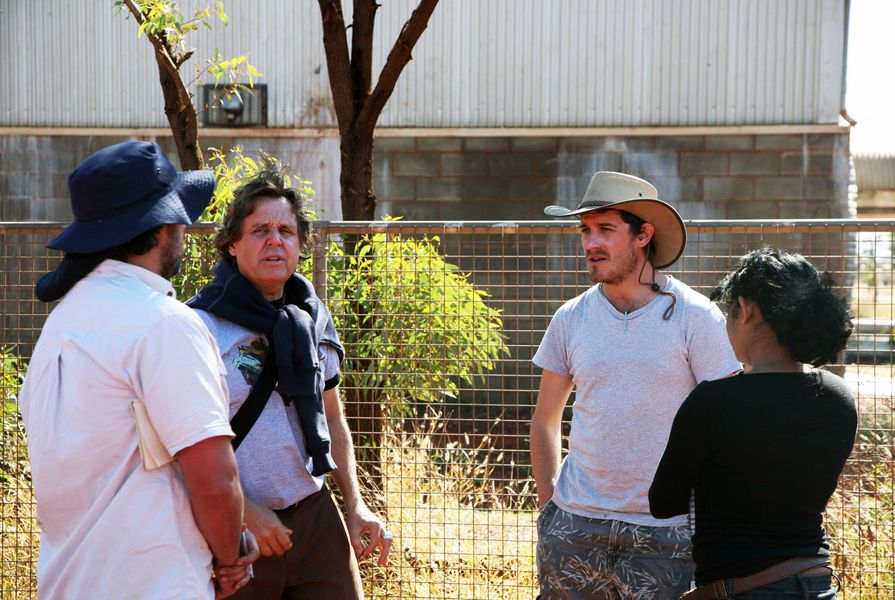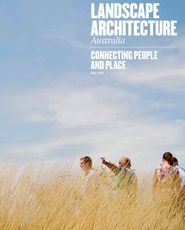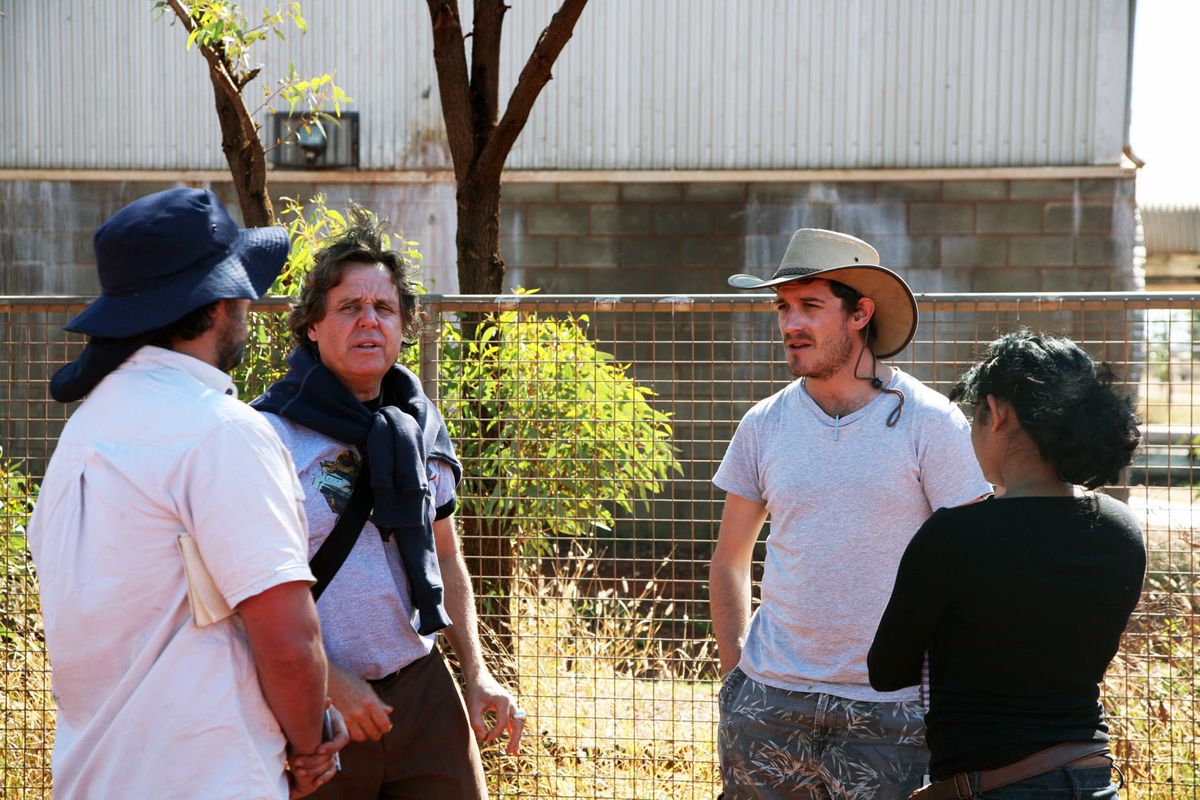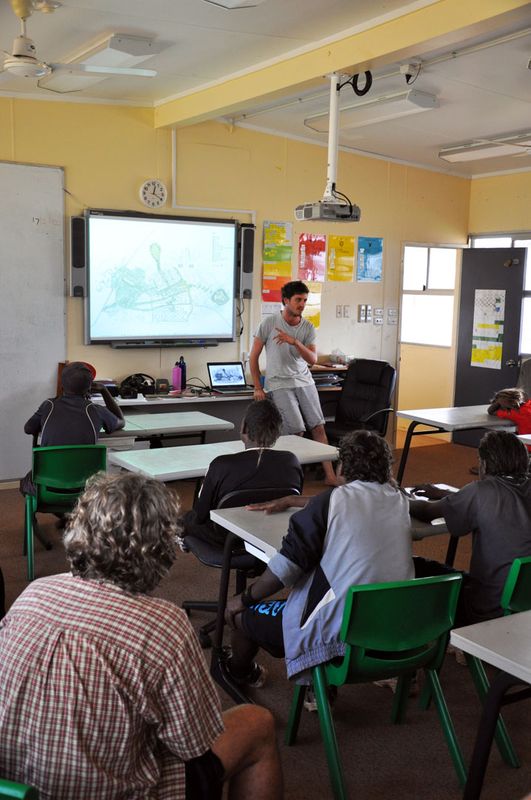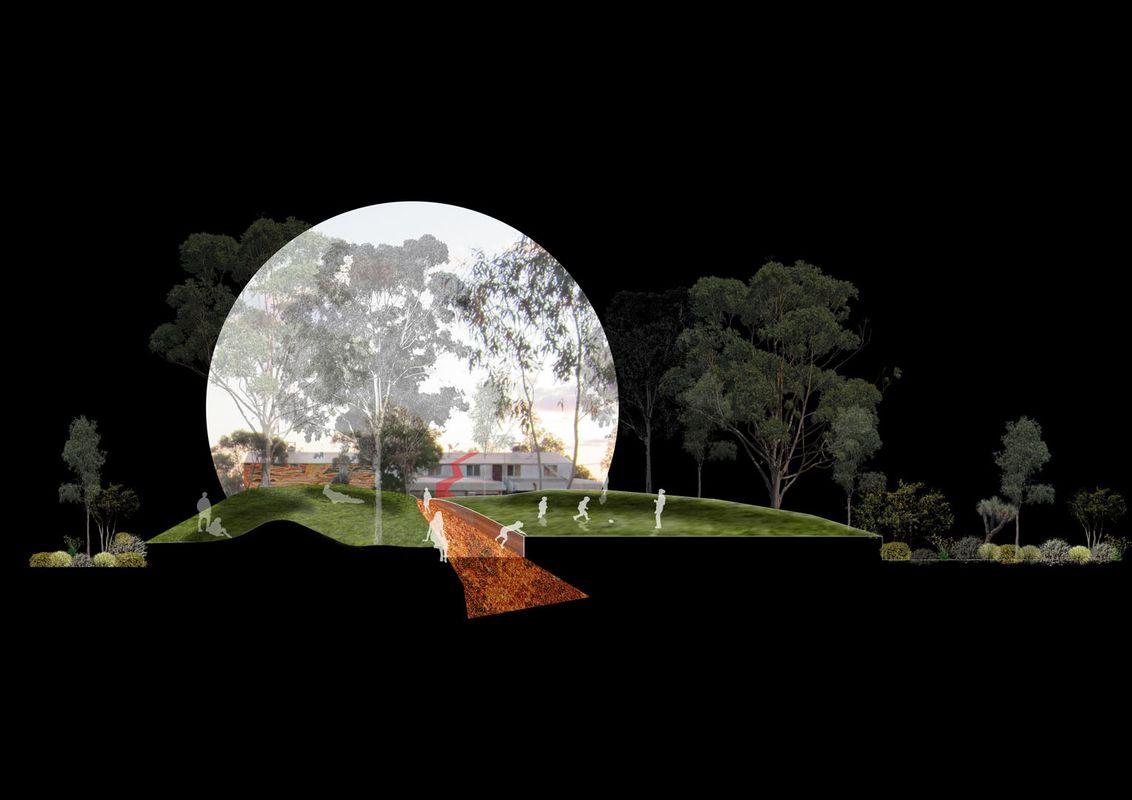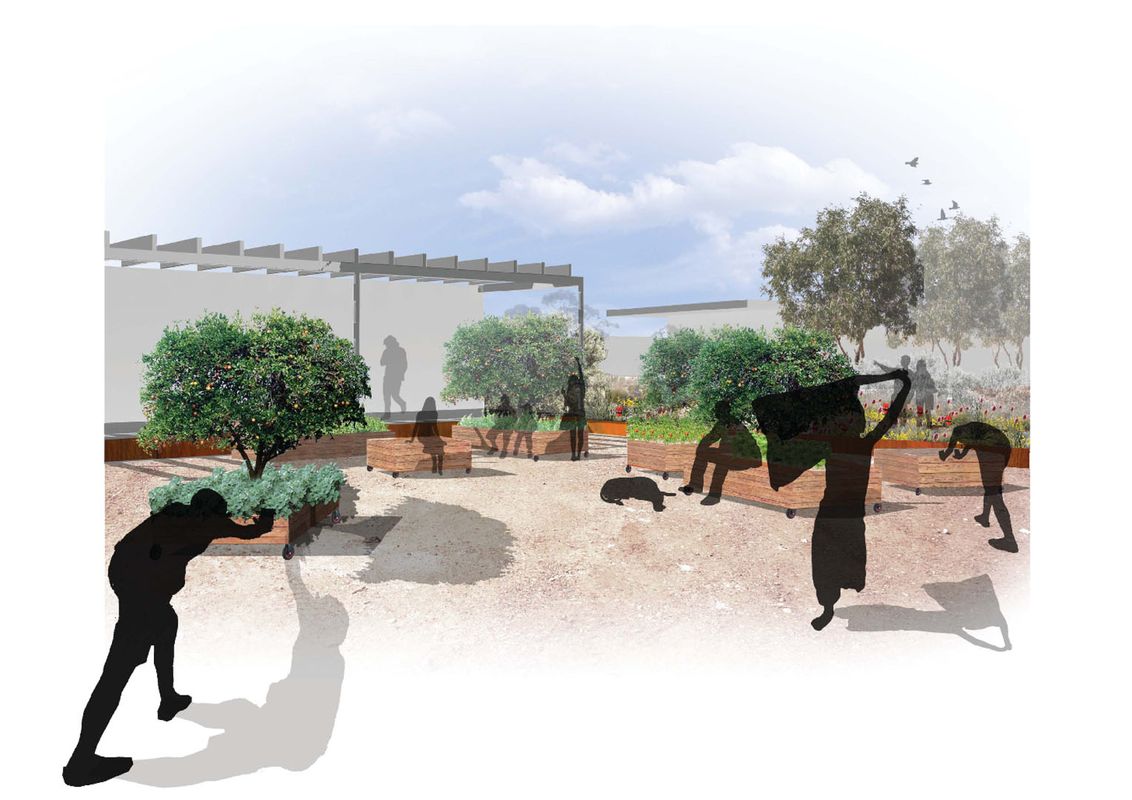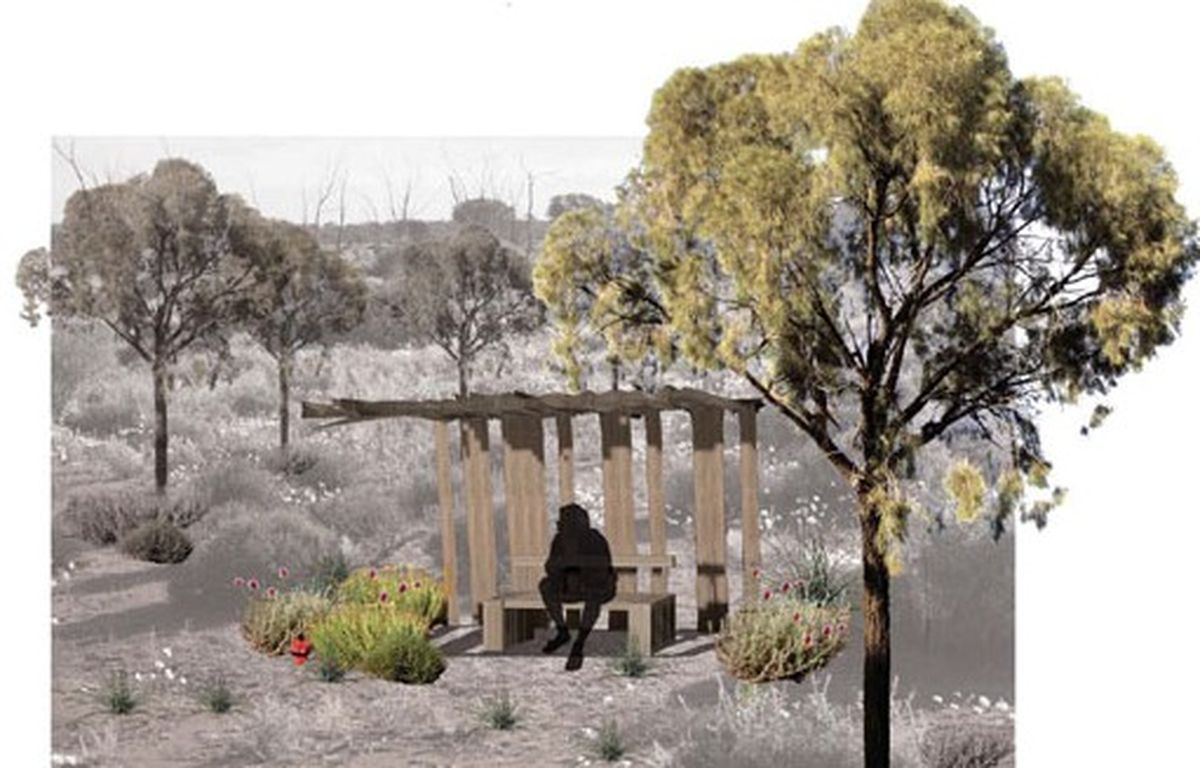Landscape Architecture Australia: Tell us about the warburton studio.
The Warburton Studio is an ideas-based design project between the University of Western Australia [Faculty of Architecture, Landscape and Visual Arts] honours by design students, the Shire of Ngaanyatjarra, the community of Warburton and AECOM, which came together to form the Warburton Collective. The project is a yearly exercise, where landscape and architectural design ideas are imagined and offered as considerations for future development in Warburton. We approached this project with a basic understanding of Warburton’s rich natural and cultural ecologies. The broad aim of the works was to assist in improving the liveability and health of the community through landscape architectural responses. On-ground collaboration and community involvement further informed research and produced grounded, place-sensitive [re]visioned town plans and design insertions.
LAA: Why did you get involved in this project?
Ben Proudfoot: The Warburton Studio was an opportunity for me to take a personal journey that would help inform how I approach design, engagement and relationship-building in my own country (Bundjalung Nation in New South Wales and south-east Queensland). This project gave me the opportunity to closely interrogate the idea of design through an Aboriginal “lens.”
Jeremy Macmath: For me, the Warburton Studio was an opportunity to explore the appropriateness of landscape architecture within a remote community context. The community-based nature of the project was also an exciting opportunity to be involved in a design project driven by process and collaboration – two factors that I believe underpin the success of projects akin to the Warburton Studio. The notion of design and research collaboration was important to Ben and I. We saw this as an opportunity that could offer rich design possibilities not usually presented when pursuing a project in isolation.
LAA: Can you summarize your teams’ engagement process and your role in this project/initiative?
JM: We arrived in Warburton with few existing contacts – several at the Shire of Ngaanyatjarra and some local community service staff. Due to the town’s isolation, it would have been difficult for us to make meaningful contacts without being there. We spent as much time as we could on the ground talking to people about what we were doing in town. This helped to spread the word about our presence and helped to build relationships for future studio groups and meetings with community elders.
BP: We were really interested in what makes Warburton tick. A real highlight for the group was the opportunity to present findings to the community. This took place on a return stay and included a school visit and a community presentation evening, where 250 Warburton residents attended a barbecue, band performances and a presentation of the work produced by the studio.
JM: As honours students, we worked in a collaborative space; however, we produced individual projects that reflect our interests and strengths. For example, Ben applied his deeper understanding of the nuances of community engagement with mob to lead this aspect of the project, while I used my knowledge and interest in landscape ecology to lead the synthesis of information on landscape systems.
LAA: Can you describe an influential person you have met that was key to implementing the process?
JM & BP: Grant Revell [Associate Professor at the UWA) is a positive mix of patience, understanding, excitement and passion that is challenging and inspiring. The work already undertaken locally in Aboriginal community development, as well as the future work of the Warburton Studio and the UWA, would be lost without him. Grant is the constant in the Warburton Studio and will hopefully continue to guide this project through its years. He truly believes in a collective approach to research and design in landscape architecture and has continued to guide our development as emerging design practitioners.
LAA: How has this project/initiative created positive change?
JM & BP: Warburton often suffers from built projects being implemented without community engagement. Similarly, the process of community engagement often disenchants community due to limited or no on-ground outcomes. However, the Warburton Studio has achieved exciting on-ground design outcomes driven by rigorous community engagement. The process of community engagement is as important as the final, tangible outcome.
More specifically, projects born from the culmination of several Warburton Studio projects have been developed and implemented, including landscape interventions in the community services hub and upcoming structural interventions within the cemetery.
The collaborative, ideas-based nature of the Warburton Studio enhances its future by contributing layers of ideas, research and contacts for future participants to follow. This will help test ideas in a meaningful, gradual and considered manner.
JM: On a personal level, the Warburton Studio helped inform and guide the direction I have taken into practice. I am in the process of arranging a return visit in either July 2013 or 2014. This will be in a support capacity to share ideas and assist in furthering the studio and interrogating/testing ideas suggested to date.
LAA: What is the greatest lesson you have learnt from your involvement in this project?
JM: A concept Grant Revell introduced me to in the earlier years of the landscape architecture course at the UWA is the notion of “together, steady, steady.” This concept took time to make sense in a disconnected university studio context, but has really emerged in the Warburton Studio. Without a collaborative approach and an on-ground engagement process, design results will inevitably lack richness, relevance and respect. Rather, this approach requires a no-rush attitude, which does not always suit the confines of a university semester.
BP: As the project evolved, I became aware that to appreciate someone else’s country, you must firstly understand your own. Taking stock and considering where you fit in your own network is important in discovering how to find a sense of belonging within other groups.

